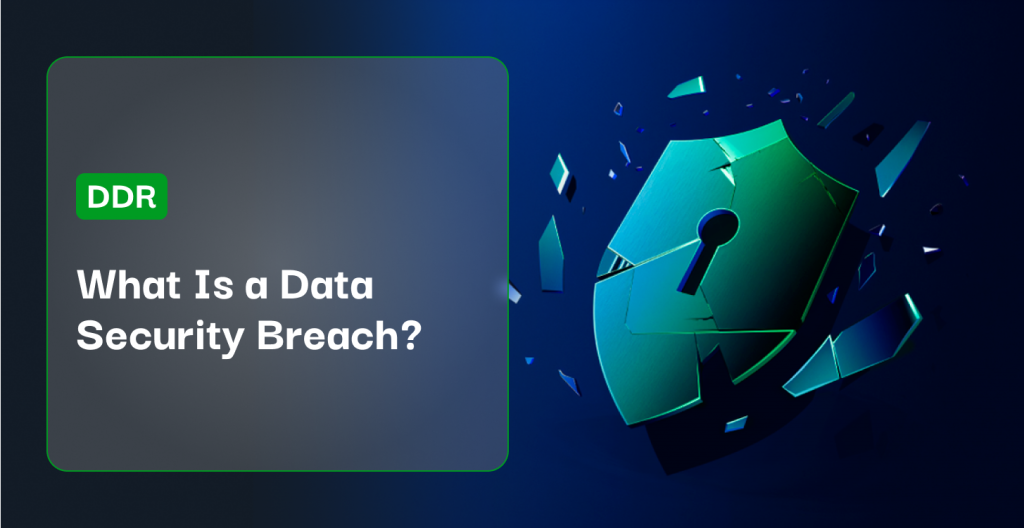In 2021, the average cost of a data breach climbed to a 17-year high of $4.24 million. Network architectures are evolving as the nature of work changes, and cyberattackers are using increasingly sophisticated methods to access and exfiltrate valuable data from organizations. Data security standards help ensure that companies are compliant, but high profile breaches still incur incredible costs. In order to help security teams protect against this risk, we’re going to cover the basics to answer the crucial question: What is a data security breach?
Jump to a section
What Is a Data Security Breach?
The Consequences of a Data Breach
High Profile Data Security Breach Examples
Learn more about how to keep you and your business’ information secure with the Symmetry Systems Complete Guide to Modern Data Security.
What Is a Data Security Breach?
A data security breach occurs when sensitive or protected information is accessed without authorization. Depending on the type of organization attacked, business critical data, intellectual property, personally identifiable information, personal health information, and payment card information are all types of data that can be exposed or stolen during a breach. Technically, a data security breach is made up of two separate parts: an initial security breach followed by a data breach. The security breach occurs when an attacker breaks into the network or cloud environment, and the data breach takes place when information is effectively stolen.
These are the four main steps attackers execute in a typical data security breach:
- Reconnaissance: Attackers spend time exploring the network or system in order to map out its vulnerabilities and identify potential attack vectors.
- Intrusion: This step is the actual security breach, in which an attacker successfully crosses the security perimeter and gains access.
- Privilege escalation: Techniques like lateral movement allow attackers to spread throughout the network and escalate their privileges to advance their attack.
- Exfiltration: Attackers complete this data breach step by transferring the target information into their own possession, either for their own personal reuse, to resell it, or to ransom it back to the company.
The Consequences of a Data Breach
The consequences that contribute to the $4 million average price tag on data security breaches aren’t all immediately monetary, but they do all add up to major losses. Here are some of the common costs that victims of data security breaches are faced with:
- Public relations crises: Government regulations require companies to notify customers, users, or the general public when data breaches occur.
- Reputation damage: Business partners, investors, and customers are all likely to lose trust in companies that have been breached.
- Disrupted operations: Recovering from operational disruptions and outages can take time, especially when business critical data has been compromised.
- Fees and fines: On top of potential ransom demands, companies also have to consider additional costs like attorney fees, government fines, and rising insurance premiums.
- Material losses: When intellectual property is stolen, companies can lose their competitive advantage or experience damage to their core business propositions.
High Profile Data Security Breach Examples
The frequency, cost, and impact of data security breaches has increased as cyberattackers have become more sophisticated and the technology infrastructure they target has continued to expand. These are a few of the most visible high profile data security breaches that have occurred in recent years.
In 2019, Facebook announced that over 530 million Facebook users’ personal data had been breached. Compromised information included names, phone numbers, passwords, and detailed Facebook activity data like friends, comments, and reactions. Two years later, serious criminal intent was implied when those stolen datasets were posted online for the public to download for free. Much of that personally identifying information made it onto the dark web. It was neither the first nor the last time that Facebook (now Meta) has come under fire for not only the sheer quantity of data it collects from users, but also whether or not it implements sufficient security measures to safeguard that data. Data scraped from that 2019 breach was published online and made available to the public for free as recently as 2021.
Android
In May 2021, security researchers discovered that data from more than 100 million Android devices was exposed and unprotected. Misconfigured cloud services left databases full of names, dates of birth, email addresses, location, photos, passwords, payment information, and even chat history publicly accessible for anyone to find. 23 popular apps ranging from screen recording to astrology (with as many as 10 million downloads from the Google Play store) relied on those real-time databases, exposing personally identifiable information from users around the world. Unprotected databases like these turn the work of a data security breach into low-hanging fruit for attackers.
Cognyte
Sometimes individual data security breaches can combine to form exposures of compounding magnitude. A database of 5 billion records stored by Cognyte, a cybersecurity analytics company that uses its cyber intelligence to inform consumers about third-party breaches, was leaked in June 2021. The exposed data included names, email addresses, and passwords that had been breached in a huge range of recent incidents. In all, those 5 billion records were left unprotected for a total of four days until Cognyte secured the database.
Whether they store it in the cloud, on-premises, or in a hybrid solution, modern organizations are tasked with safeguarding the data they collect and use. Symmetry Systems helps security teams protect sensitive data stored in the cloud with an evidence-based approach to IAM policy management. Interested in learning how Symmetry DataGuard helps cloud-based companies protect against data security breaches? Contact us today to learn more.






